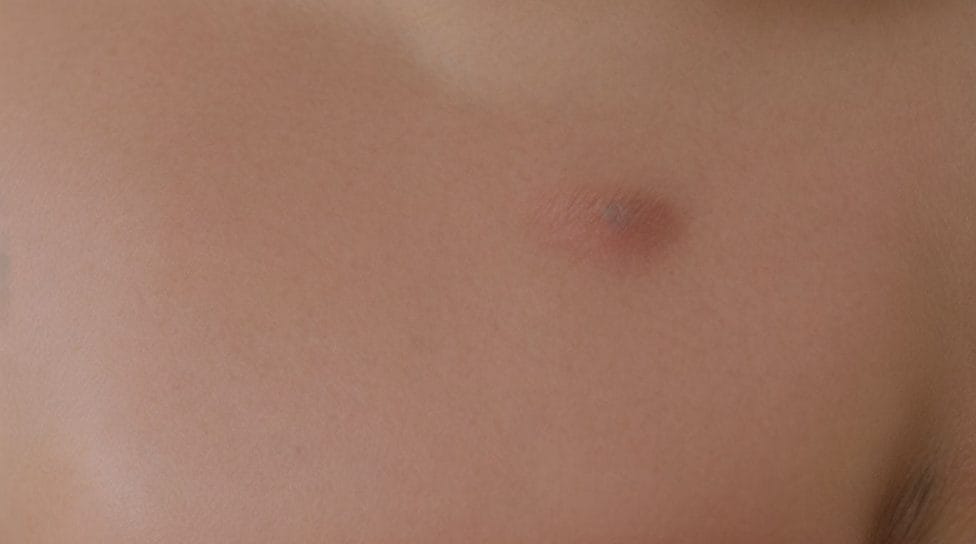Tattoo removal is a common consideration for individuals who wish to eliminate unwanted or regrettable tattoos. While there are various tattoo removal methods available, many individuals are concerned about whether the removal process will result in visible scars. Understanding the different methods of tattoo removal is essential to assess the potential for Scarring.
Methods of tattoo removal include laser tattoo removal, intense pulsed light therapy, surgical excision, and dermabrasion. Laser tattoo removal is one of the most popular methods, using laser technology to break down the ink particles in the skin. Intense pulsed light therapy is another option that utilizes light pulses to target the tattoo pigment. Surgical excision involves physically removing the tattooed skin, while dermabrasion uses a rotating brush to exfoliate the tattooed area.
The question arises: do tattoo removal procedures leave scars? Factors that affect Scarring include the size and color of the tattoo, the location on the body, the skill of the practitioner, and the individual’s skin type and healing capabilities. While some scarring may occur during removal, advancements in technology and techniques have significantly reduced the risk.
Potential risks and complications associated with tattoo removal procedures, including Scarring, infection, pigment changes, hypopigmentation and hyperpigmentation, and delayed healing, should also be considered. However, it’s important to note that Scarring is not a guaranteed outcome of tattoo removal, and some steps can be taken to prevent and minimize Scarring.
Prevention and minimization of Scarring can be achieved by choosing an experienced and qualified practitioner, following proper aftercare procedures, adhering to post-treatment instructions, and using scar-reducing treatments as recommended. It’s essential to consult with a professional and discuss individual concerns and expectations regarding Scarring before undergoing any tattoo removal procedure.
Key Takeaways:
- Tattoo removal procedures can leave scars depending on various factors, such as the method used, individual skin type, and aftercare practices.
- Laser tattoo removal is considered one of the most effective methods that minimizes the risk of Scarring. However, complications can still occur if the procedure is improper or the patient does not follow post-treatment instructions.
- To prevent or minimize Scarring after tattoo removal, it is important to choose a qualified practitioner, follow proper aftercare routines, and consider using scar-reducing treatments recommended by professionals.
Methods of Tattoo Removal
There are various methods to consider when it comes to getting rid of unwanted tattoos. In this section, we’ll dive into the different techniques available for tattoo removal. From laser tattoo removal to intense pulsed light therapy, surgical excision, and dermabrasion, we’ll explore each sub-section to help you understand the options and potential outcomes. So, if you’re curious about how to bid farewell to that ink, buckle up, and let’s delve into the world of tattoo removal methods!
Laser Tattoo Removal
Laser tattoo removal is a highly sought-after technique that utilizes laser technology to target and break down the ink particles in the skin. Emitting high-intensity light pulses, the laser directly affects the tattoo pigments, leading to their fragmentation. As time passes, the body’s immune system naturally eliminates these fragmented pigments, resulting in a gradual lightening or complete tattoo eradication. In the realm of tattoo removal methods, laser tattoo removal is widely acknowledged as one of the most effective and least invasive options available today. However, it is crucial to consider various factors, such as the size of the tattoo, the color and type of ink used, the location on the body, and the unique characteristics of an individual’s skin. These factors determine the number of necessary laser sessions for achieving comprehensive tattoo removal.
Intense Pulsed Light Therapy
Intense Pulsed Light Therapy (IPL) is a highly popular non-invasive method utilized for tattoo removal. This procedure employs high-intensity light pulses to break down tattoo ink pigments, allowing the body to eliminate them naturally. Complete removal may necessitate multiple sessions, especially when dealing with black or colored tattoos. Fortunately, IPL therapy is generally safe, resulting in minimal side effects such as temporary redness and swelling. Selecting a qualified practitioner and diligently adhering to proper aftercare instructions is crucial to optimize the overall outcomes. Post-treatment, scar-minimizing treatments such as silicone sheets or creams can also be applied for better results.
Surgical Excision
- Surgical excision is a tattoo removal method that involves cutting out the tattooed skin and stitching the surrounding skin back together. Here is a step-by-step guide to the surgical excision process:
- Before the surgical excision, the area around the tattoo is cleaned and numbed with a local anesthetic.
- The surgeon uses a scalpel to carefully perform surgical excision by removing the tattooed skin, ensuring all the ink is completely removed.
- The edges of the remaining skin are then carefully stitched back together using sutures as part of the surgical excision process.
- After the surgical excision, the incision site is covered with a sterile dressing to protect it and promote healing.
- During the healing process following surgical excision, it is important to follow the surgeon’s instructions regarding wound care and keeping the area clean and dry.
- Scarring is a common side effect of surgical excision, but techniques such as plastic surgery or scar revision may be used to improve the appearance of the scar.
These steps outline the general process of surgical excision for tattoo removal. It is important to consult with a qualified and experienced practitioner to determine if surgical excision is suitable for your specific case.
Dermabrasion
Dermabrasion is a tattoo removal method that involves removing the top layers of skin using a rotating brush or diamond wheel. This process helps to eliminate the tattoo ink embedded in the skin. Dermabrasion is particularly effective for removing older, faded tattoos or areas with thicker skin. It may cause discomfort and require several sessions to remove the tattoo completely. After the procedure, the skin will need time to heal and may result in temporary redness or Scarring. It’s important to consult with a qualified practitioner and follow proper aftercare instructions to minimize the risk of Scarring.
Do Tattoo Removal Procedures Leave Scars?

Photo Credits: Tattooineplanet.Com by Gary Campbell
Tattoo removal is a popular choice for individuals who wish to bid farewell to their inked past. But what about the aftermath? This section will dive into a burning question: Do tattoo removal procedures leave scars? We’ll break down the factors that play a crucial role in Scarring, revealing insights to help you make informed decisions about your tattoo removal journey. Get ready to uncover the truth behind tattoo removal and its potential impact on your skin.
Factors That Affect Scarring
Various factors that affect Scarring can occur during tattoo removal procedures. The size and depth of the tattoo, as well as the location on the body, are factors that influence the risk of Scarring. Additionally, the type of removal method used and the practitioner’s expertise play a role in Scarring. The individual’s skin type and overall health also impact Scarring. To minimize Scarring, it is important to choose an experienced practitioner, follow proper aftercare instructions, and consider using scar-reducing treatments. By taking these precautions, individuals can help achieve the best possible outcome and minimize the appearance of scars after tattoo removal.
Potential Risks and Complications

Photo Credits: Tattooineplanet.Com by Mason Moore
Potential risks and complications associated with tattoo removal go beyond just the question of Scarring. In this section, we’ll dive into the various factors that can arise during tattoo removal. From the risk of infection to pigment changes and delayed healing, we’ll explore the potential challenges individuals may face. Stay tuned as we navigate the intricacies of tattoo removal to provide you with a comprehensive understanding of the potential risks involved.
Infection
Tattoo removal procedures like laser tattoo removal and surgical excision risk infection. Infections can occur if proper hygiene is not maintained during the procedure or aftercare instructions are not followed correctly. Symptoms of infection include redness, swelling, warmth, tenderness, and pus. It is important to choose an experienced practitioner who follows strict sterilization protocols and provides clear aftercare instructions to minimize the risk of infection. If an infection does occur, prompt medical treatment, such as antibiotics, may be necessary to prevent complications. Consult a qualified professional and follow post-treatment instructions for a successful and safe tattoo removal process.
Pigment Changes
Pigment changes are a common concern when it comes to tattoo removal procedures. Here are some important facts about pigment changes:
- Hyperpigmentation occurs when the skin produces an excess of pigment, causing the treated area to appear darker than the surrounding skin.
- Hypopigmentation: On the other hand, hypopigmentation happens when the skin loses its pigment, resulting in a lighter area where the tattoo was removed.
- Individual factors: The likelihood of experiencing pigment changes can vary based on skin tone, tattoo colors, and the individual’s healing process.
- Temporary or permanent: In some cases, pigment changes may resolve independently over time. They can also become permanent alterations in the skin.
It is crucial to consult with a qualified practitioner before tattoo removal to understand the risks and possible pigment changes associated with the procedure.
Hypopigmentation and Hyperpigmentation
Hypopigmentation and hyperpigmentation are potential risks of tattoo removal procedures. Hypopigmentation, which is the lightening of the skin in the treated area, and hyperpigmentation, which is the darkening of the skin, are common pigment changes that can occur during removal. These changes are a result of the disruption of melanin production. Factors such as skin type and the practitioner’s expertise also contribute to the likelihood of experiencing hypopigmentation and hyperpigmentation. To minimize these pigment changes, following proper Aftercare and post-treatment instructions and using scar-reducing treatments is essential.
Sarah’s experience after having her tattoo removed was marked by hypopigmentation, which affected her self-esteem. Fortunately, she sought the assistance of a proficient practitioner who recommended specialized scar-reducing treatments. Over time, Sarah witnessed the gradual restoration of her skin’s natural color, significantly boosting her confidence.
Delayed Healing
Delayed healing is a potential outcome of tattoo removal procedures. Several factors, including the size and location of the tattoo, can influence the healing process. It is essential to consider the possibility of delayed healing, which may result from issues such as infection or insufficient Aftercare. To minimize the risk of delayed healing, following post-treatment instructions and diligently utilizing scar-reducing treatments are crucial. Moreover, selecting a skilled and knowledgeable practitioner is paramount to ensure appropriate care and diminish the likelihood of complications. By understanding the potential risks and taking necessary precautions, individuals can contribute to a smoother healing process following tattoo removal.
Scarring
Tattoo removal procedures can potentially leave scars, depending on several factors. The methods used, such as laser tattoo removal or surgical excision, can impact Scarring. Factors like the size and color of the tattoo, the skill of the practitioner, and the Aftercare also play a role. Potential risks and complications include infection, pigment changes, hypopigmentation, hyperpigmentation, and delayed healing, all of which can contribute to Scarring. To prevent and minimize Scarring, it is important to choose an experienced practitioner, follow proper Aftercare and post-treatment instructions, and consider using scar-reducing treatments. Scarring is a common concern in tattoo removal, but proper care can help reduce its occurrence.
True story: Sarah, a friend, decided to remove a large tattoo on her forearm. She opted for laser tattoo removal and followed all the aftercare instructions diligently. While she experienced some mild scarring initially, it gradually faded over time with the help of scar-reducing treatments. Although there is still a faint mark, Sarah is happy with the overall outcome, which no longer bothers her. Her story highlights the importance of proper care and patience in minimizing Scarring during tattoo removal.
Prevention and Minimization of Scarring

Photo Credits: Tattooineplanet.Com by Walter Jones
One of the main concerns regarding tattoo removal is whether it leaves behind scars. This section will explore ways to prevent and minimize Scarring during tattoo removal. From choosing an experienced and qualified practitioner to proper Aftercare and following post-treatment instructions, we’ll uncover effective methods for reducing the likelihood of scars. We’ll delve into the potential benefits of using scar-reducing treatments to enhance the overall results further.
Choosing an Experienced and Qualified Practitioner
When considering tattoo removal, selecting an experienced and qualified practitioner is crucial to ensure the procedure is performed safely and effectively. This choice helps reduce the risk of complications, or Scarringando guarantees that a skilled practitioner with the necessary training and expertise will assess your tattoo and skin type. They will recommend the most suitable removal method and provide proper aftercare guidance. By opting for a reputable practitioner, you can have confidence in the quality of care provided and increase the likelihood of achieving the desired outcome with minimal Scarring.
Proper Aftercare
Proper Aftercare is essential for minimizing the risk of Scarring after tattoo removal. To ensure optimal healing, it is important to follow these steps:
- Keep the treated area clean and dry to prevent infection.
- Avoid picking or scratching the scab, as this can lead to Scarring.
- Apply a thin layer of antibiotic ointment or prescribed cream to promote healing.
- Avoid exposing the area to direct sunlight or tanning beds, as UV radiation can cause pigmentation changes.
- Moisturize the area regularly with fragrance-free lotion to keep the skin hydrated.
Every individual’s healing process is unique, so consulting with your tattoo removal specialist for personalized aftercare instructions is important. By following these steps diligently, you can significantly minimize the chances of Scarring and promote healthy skin recovery.
Following Post-Treatment Instructions
Following post-treatment instructions is essential for successful tattoo removal and to minimize the risk of Scarring. Here are some crucial steps to follow:
- Keep the treated area clean and dry to prevent infection.
- Avoid picking or scratching the scabbing or peeling skin.
- Apply any prescribed ointments or creams as directed by your tattoo removal specialist.
- Avoid exposing the treated area to direct sunlight or tanning beds to prevent pigment changes.
- Avoid strenuous exercise or activities that may cause excessive sweating until the treated area has fully healed.
History has shown that following post-treatment instructions is vital in achieving the best outcomes in tattoo removal procedures. Adhering to these instructions can help ensure a smooth recovery and minimize the chances of Scarring.
Using Scar-Reducing Treatments
“`
- Using scar-reducing treatments after tattoo removal procedures can help minimize the appearance of scars and promote faster healing. Here are some options to consider:
- Applying silicone gel sheets over the tattoo removal area can help flatten and soften scars.
- Topical creams containing vitamin E and onion extract can help reduce scar tissue.
- In some cases, cortisone injections can reduce inflammation and minimize scar formation.
- Certain types of laser treatments can help fade scars and improve skin texture.
Fact: Studies have shown that consistently using scar-reducing treatments can significantly improve the appearance of scars after tattoo removal procedures.
Some Facts About Tattoo Removal: Does It Leave Scars?
- ✅ Scarring after laser tattoo removal is unlikely if done correctly by qualified professionals. (Source: chronicinktattoo.com)
- ✅ The risk of Scarring increases if aftercare instructions, such as keeping the area clean and avoiding picking at the skin, are not followed. (Source: chronicinktattoo.com)
- ✅ Temporary discoloration may occur in the treated area but is usually not permanent. (Source: chronicinktattoo.com)
- ✅ Keloid scarring, larger scar tissue development, can occur after laser tattoo removal, especially if it has happened in the past. (Source: chronicinktattoo.com)
- ✅ Laser tattoo removal does not leave scars when performed with advanced laser technology such as the Enlighten™ laser system. (Source: laser care skin clinic)


